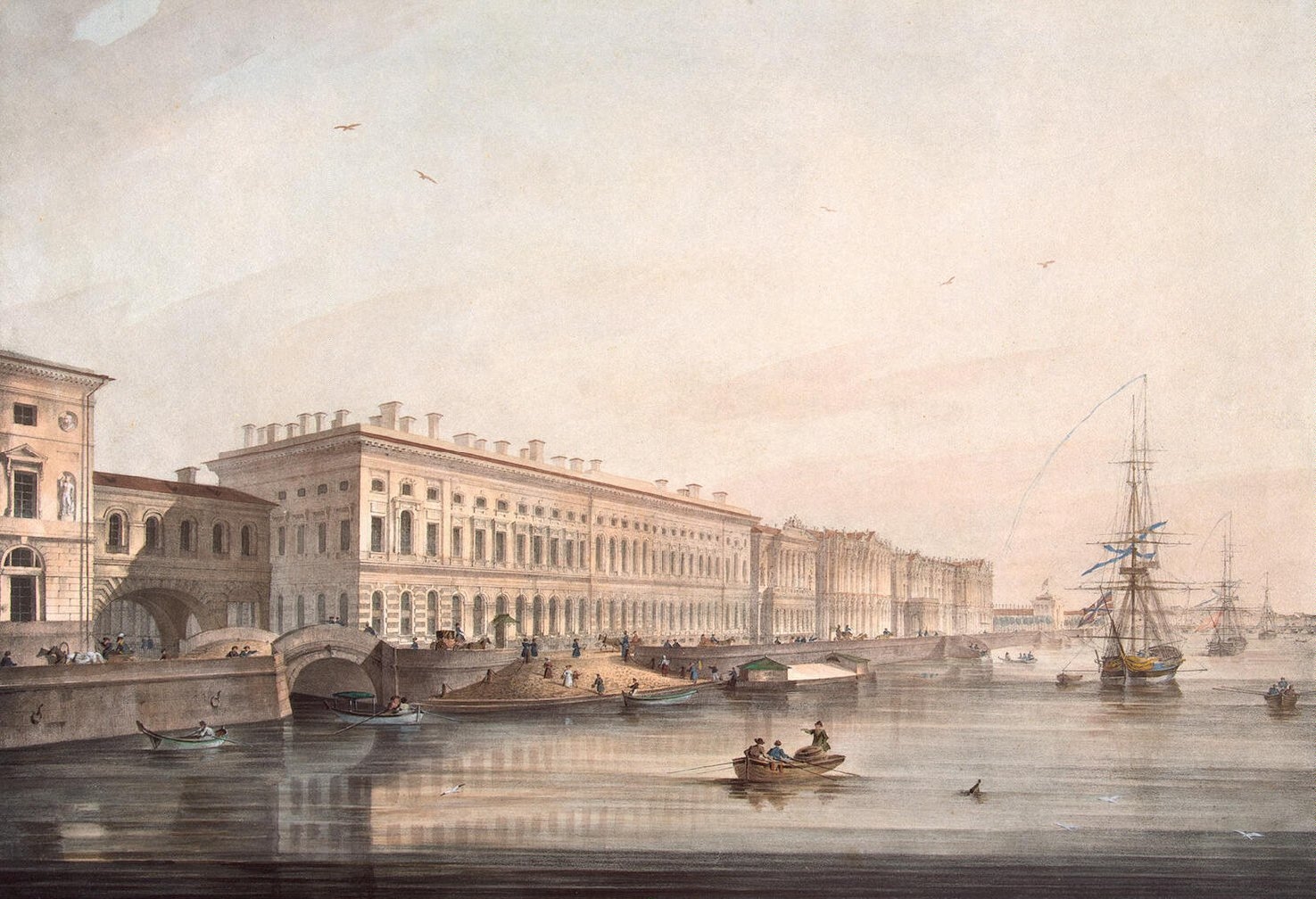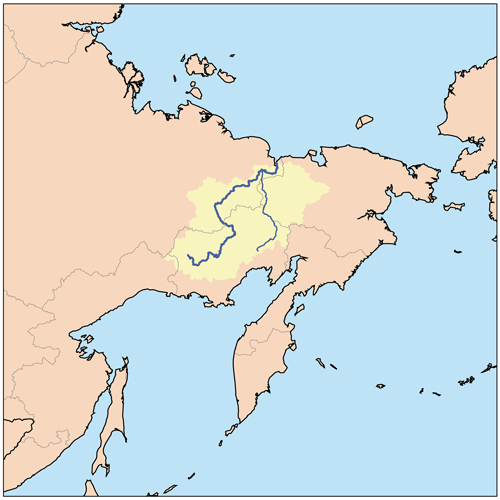|
Sugoy River
The Sugoy ( rus, Сугой) is a river in Magadan Oblast, Russian Far East. It is long, with a drainage basin of . The river freezes in October and stays frozen until late May or early June. There are important coal deposits in the Sugoy basin.Сугой, Great Soviet Encyclopedia in 30 vols. / Ch. ed. A.M. Prokhorov - 3rd ed. - M, 1969-1978. Course The river has its source in the confluence of two small rivers of the Kolyma Highlands at an elevation of and flows roughly westwards in its upper course. After a sharp bend it flows northwards along the eastern flank of the Omsukchan Range. North of Omsukchan town the intermontane basin where the river flows is up to wide and includes extensive wetland areas, as well as dense forests. Finally it joins the right bank of the Kolyma from its mouth.Google Earth The main tributary of the Sugoy is the Khetagchan (Хетагчан) that joins it in its lower course from the right. See also *List of rivers of Russia Russia can be ... [...More Info...] [...Related Items...] OR: [Wikipedia] [Google] [Baidu] |
Magadan Oblast
Magadan Oblast ( rus, Магаданская область, r=Magadanskaya oblast, p=məgɐˈdanskəjə ˈobləsʲtʲ) is a federal subject (an oblast) of Russia. It is geographically located in the Far East region of the country, and is administratively part of the Far Eastern Federal District. Magadan Oblast has a population of 156,996 ( 2010 Census), making it the least populated oblast and the third-least populated federal subject in Russia. Magadan is the largest city and the capital of Magadan Oblast. The majority of the Oblast's inhabitants live in the city. The coastline has a less severe climate than the interiors, although both are very cold for its latitude. It borders Chukotka Autonomous Okrug in the north, Kamchatka Krai in the east, Khabarovsk Krai in the south and the Sakha Republic in the west. The economy is primarily based on mining, particularly gold, silver and other non-ferrous metals. History Magadan Oblast was established on December 3, 1953Decree of ... [...More Info...] [...Related Items...] OR: [Wikipedia] [Google] [Baidu] |
Omsukchan
Omsukchan (russian: Омсукча́н) is an urban locality (an urban-type settlement) and the administrative center of Omsukchansky District of Magadan Oblast, Russia, located north of Magadan. Population: History Omsukchan was founded in the 1930s after natural resources were discovered in the region. It was granted urban-type settlement status in 1953. The settlement's name comes from ''Omchikan'', which means "little marsh" in the Even language. Geography Omsukchan is a mountain town that lies in the western shore of Sugoy River, a tributary of Kolyma River. It is 27 km east of Dukat, the other town in the raion, and 22 km north of the ghost town of Galimy. The Omsukchan Range, highest ridge of the Kolyma Mountains, rises to the west and northwest of the town. Demographics Colors= id:lightgrey value:gray(0.9) id:darkgrey value:gray(0.7) id:sfondo value:rgb(1,1,1) id:barra value:rgb(0.6,0.7,0.8) ImageSize = width:520 height:400 PlotArea = left:50 b ... [...More Info...] [...Related Items...] OR: [Wikipedia] [Google] [Baidu] |
List Of Rivers Of Russia
Russia can be divided into a European and an Asian part. The dividing line is generally considered to be the Ural Mountains. The European part is drained into the Arctic Ocean, Baltic Sea, Black Sea, and Caspian Sea. The Asian part is drained into the Arctic Ocean and the Pacific Ocean. Notable rivers of Russia in Europe are Volga (which is the longest river in Europe), Pechora, Don, Kama, Oka and the Northern Dvina, while several other rivers originate in Russia but flow into other countries, such as the Dnieper and the Western Dvina. In Asia, important rivers are the Ob, the Irtysh, the Yenisei, the Angara, the Lena, the Amur, the Yana, the Indigirka, and the Kolyma. In the list below, the rivers are grouped by the seas or oceans into which they flow. Rivers that flow into other rivers are ordered by the proximity of their point of confluence to the mouth of the main river, i.e., the lower in the list, the more upstream. There is an alphabetical list of rivers at the end of ... [...More Info...] [...Related Items...] OR: [Wikipedia] [Google] [Baidu] |
Google Earth
Google Earth is a computer program that renders a 3D computer graphics, 3D representation of Earth based primarily on satellite imagery. The program maps the Earth by superimposition, superimposing satellite images, aerial photography, and geographic information system, GIS data onto a 3D globe, allowing users to see cities and landscapes from various angles. Users can explore the globe by entering addresses and coordinates, or by using a Computer keyboard, keyboard or computer mouse, mouse. The program can also be downloaded on a smartphone or Tablet computer, tablet, using a touch screen or stylus to navigate. Users may use the program to add their own data using Keyhole Markup Language and upload them through various sources, such as forums or blogs. Google Earth is able to show various kinds of images overlaid on the surface of the earth and is also a Web Map Service client. In 2019, Google has revealed that Google Earth now covers more than 97 percent of the world, and has c ... [...More Info...] [...Related Items...] OR: [Wikipedia] [Google] [Baidu] |
Wetland
A wetland is a distinct ecosystem that is flooded or saturated by water, either permanently (for years or decades) or seasonally (for weeks or months). Flooding results in oxygen-free (anoxic) processes prevailing, especially in the soils. The primary factor that distinguishes wetlands from terrestrial land forms or Body of water, water bodies is the characteristic vegetation of aquatic plants, adapted to the unique anoxic hydric soils. Wetlands are considered among the most biologically diverse of all ecosystems, serving as home to a wide range of plant and animal species. Methods for assessing wetland functions, wetland ecological health, and general wetland condition have been developed for many regions of the world. These methods have contributed to wetland conservation partly by raising public awareness of the functions some wetlands provide. Wetlands occur naturally on every continent. The water in wetlands is either freshwater, brackish or seawater, saltwater. The main w ... [...More Info...] [...Related Items...] OR: [Wikipedia] [Google] [Baidu] |
Intermontane Basin
Intermontane is a physiographic adjective formed from the prefix " inter-" (''signifying among, between, amid, during, within, mutual, reciprocal'') and the adjective "montane" (inhabiting, or growing in mountainous regions, especially cool, moist upland slopes below the timberline). The corresponding ''physiographic'' noun is intermountain, while the noun ''intermontane'' is an ''ecologic'' noun meaning ''among, between, amid, or within " flora and fauna of a montane habitat.''" As an example, an alpine region would be an intermontane for a species that migrates between a glacial region and a subalpine region. Use of the term *Intermontane Basin, a wide valley between mountain ranges that is partly filled with alluvium such as New Zealand's Mackenzie Basin. *Intermontane Belt, a physiogeological region in the North American Pacific Northwest. *Intermontane Plateaus, the United States physiographic region of the Intermountain West. *Intermontane Steppe, a term used mainly i ... [...More Info...] [...Related Items...] OR: [Wikipedia] [Google] [Baidu] |
Omsukchan Range
The Omsukchan Range ( rus, Омсукчанский хребет) is a mountain range in the Magadan Oblast, Far Eastern Federal District, Russia.Омсукчанский хребет, Great Soviet Encyclopedia in 30 vols. / Ch. ed. A.M. Prokhorov – 3rd ed. – M, 1969-1978. The nearest city is Omsukchan, the capital of Omsukchan District, and the nearest airport Omsukchan Airport. A branch of the Kolyma Highway, the Omsukchan Highway, passes through the middle section of the ridge, across the Kapranovsky Pass. The mountains have rich deposits of tin, gold and silver. Ken Mountain, a conical peak which is a tourist attraction, is located in the range. Geography The Omsukchan Range rises in the southernmost sector of the Kolyma Highlands System. The range runs between the Balygychan River valley in the west and the Sugoy River valley in the east, both right tributaries of the Kolyma. The highest mountain of the range is high Gora Nevskaya, located southwest of Omsukc ... [...More Info...] [...Related Items...] OR: [Wikipedia] [Google] [Baidu] |
Kolyma Highlands
Kolyma (russian: Колыма́, ) is a region located in the Russian Far East. It is bounded to the north by the East Siberian Sea and the Arctic Ocean, and by the Sea of Okhotsk to the south. The region gets its name from the Kolyma River and mountain system, parts of which were not accurately mapped by Russian surveyors until 1926. Today the region consists roughly of the Chukotka Autonomous Okrug and the Magadan Oblast. The area, part of which is within the Arctic Circle, has a subarctic climate with very cold winters lasting up to six months of the year. Permafrost and tundra cover a large part of the region. Average winter temperatures range from (even lower in the interior), and average summer temperatures, from . There are rich reserves of gold, silver, tin, tungsten, mercury, copper, antimony, coal, oil, and peat. Twenty-nine zones of possible oil and gas accumulation have been identified in the Sea of Okhotsk shelf. Total reserves are estimated at 3.5 billion tons of ... [...More Info...] [...Related Items...] OR: [Wikipedia] [Google] [Baidu] |
Alexander Prokhorov
Alexander Mikhailovich Prokhorov (born Alexander Michael Prochoroff, russian: Алекса́ндр Миха́йлович Про́хоров; 11 July 1916 – 8 January 2002) was an Australian-born Soviet-Russian physicist known for his pioneering research on lasers and masers in the Soviet Union for which he shared the Nobel Prize in Physics in 1964 with Charles Hard Townes and Nikolay Basov. Early life Alexander Michael Prochoroff was born on 11 July 1916 at Russell Road, Peeramon, Queensland, Australia (now 322 Gadaloff Road, Butchers Creek, situated about 30 km from Atherton), to Mikhail Ivanovich Prokhorov and Maria Ivanovna (née Mikhailova), Russian revolutionaries who had emigrated from Russia to escape repression by the tsarist regime. As a child he attended Butchers Creek State School.Tablelander (newspaper) 19 July 2016 'Prokharov centenary' In 1923, after the October Revolution and the Russian Civil War, the family returned to Russia. In 1934, ... [...More Info...] [...Related Items...] OR: [Wikipedia] [Google] [Baidu] |
Great Soviet Encyclopedia
The ''Great Soviet Encyclopedia'' (GSE; ) is one of the largest Russian-language encyclopedias, published in the Soviet Union from 1926 to 1990. After 2002, the encyclopedia's data was partially included into the later ''Bolshaya rossiyskaya entsiklopediya'' (or '' Great Russian Encyclopedia'') in an updated and revised form. The GSE claimed to be "the first Marxist–Leninist general-purpose encyclopedia". Origins The idea of the ''Great Soviet Encyclopedia'' emerged in 1923 on the initiative of Otto Schmidt, a member of the Russian Academy of Sciences. In early 1924 Schmidt worked with a group which included Mikhail Pokrovsky, (rector of the Institute of Red Professors), Nikolai Meshcheryakov (Former head of the Glavit, the State Administration of Publishing Affairs), Valery Bryusov (poet), Veniamin Kagan (mathematician) and Konstantin Kuzminsky to draw up a proposal which was agreed to in April 1924. Also involved was Anatoly Lunacharsky, People's Commissar of Education ... [...More Info...] [...Related Items...] OR: [Wikipedia] [Google] [Baidu] |





